Sessions
Texts
-
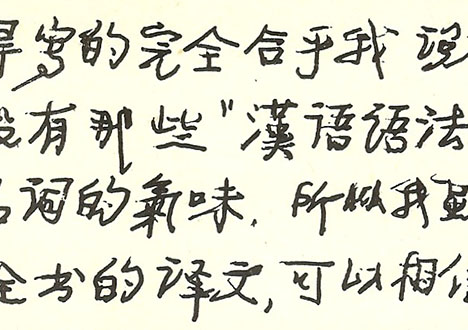 Chao (1980)
Chao (1980)趙元任 Yuen Ren Chao, 序 "Xù" [Preface]
In: Chao (1968, 1980)b, frontispiece. Facsimile reproduction of a handwritten endorsement by the original author of a Chinese translation of his A grammar of spoken Chinese (1968).
-
Chao (1968, 1980)a
趙元任 Yuen Ren Chao, 連動式 "Liándòng shì" [Verbal expressions in series]
In: Chao (1968, 1980)b, pp. 172-176
-
Chao (1968, 1980)b
中國話的文法 Zhōngguóhuà de wénfǎ [A grammar of spoken Chinese].
香港 Hong Kong: 中文大學出版社 Chinese University Press, 1980, pp. 172-176.
Translation of Yuen Ren Chao, A grammar of spoken Chinese.
Berkeley: University of California Press, 1968. Translated by 丁邦新 Pang-Hsin Ting.
A digital scan of the text is available at IASK/爱问.
Assignments
1. Chao's 序 will be introduced in class. No preparation is needed for this first session.
2. Please pay attention to the historical, cultural and academic contexts of both texts. These will be explained and discussed in class.
Text
Assignments
3. Read the assigned text on 連動式, taking good notice of the background discussed in Week 1.
4. Please note down any difficulties you may have in reading the text, and bring your notes to class.
5. The English original is available from the reference shelves in the East Asian Library.
Compare the Chinese text to the original, especially in places where you find the Chinese text hard to read.
6. Consider the example of 並列式 in the first paragraph:
他天天儿寫信會客。Tā tiāntiār xiě xìn huì kè.
How does this example compare with its English original?
Can you spot any differences between and the English example and the translated example that might affect the line of argument in this text?
 FYI
FYI
Drongo Festival
DRONGO is for anyone who lives in, and wants to explore the modern multilingual world.
Entrance is free. This year's theme is "Languages for the future".
Date: 27 Sep 14
Time: 10:00am-5:00pm
Venue: Amsterdam's public library (OBA), just a five-minute walk from Centraal Station at Oosterdokskade 143 in Amsterdam.
Web: Drongo Festival
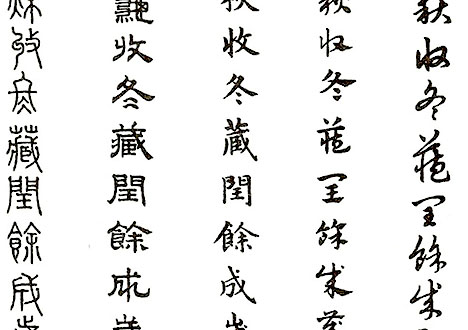 Text
Text
-
Norman (1988)
Jerry Norman, "The Chinese script"
In: Jerry Norman, Chinese.
Cambridge: Cambridge University Press, 1988, Chapter 3 = pp. 58-82.
Assignments
7. We will finish reading last week's text on 連動式. Please bring your notes and any remaining questions to class.
8. Also remaining from last week: assignment 6.
9. Read the two assigned chapters from Jerry Normans Chinese.
In preparing these chapters, please check that you are familiar with
Note down any difficulties you may have in reading the text, and bring your notes to class.
technical terms in English and in Mandarin (including the corresponding Chinese characters);
names and dates for dynasties, historical periods and historical figures;
geographical designations.
![]() A friendly reminder: please make sure you prepare your answers to all questions & assignments in writing.
A friendly reminder: please make sure you prepare your answers to all questions & assignments in writing.
10. On p. 58, the origins of Chinese characters are outlined.
a. In English, do you know a term for the study of writing systems? And in Mandarin?
b. Can you name (at least) three families of scripts, i.e. writing systems of the world which (as far as we know) developed independently?
c. Is the oracle bone script the undisputed precursor of the modern Chinese character script?
d. Can you name (at least) seven different Sinitic languages?
Please give the English and in Mandarin names for each of these, as well as the Chinese characters (简体 & 繁體) for each name.
e. What is the oldest Sinitic phase which has been reconstructed in phonological detail? Please give (approximate) dates.
f. Is the language encoded by the oracle bone script the undisputed precursor of the modern Sinitic languages?
11. The ideographic notion, i.e. the notion "that Chinese characters in some platonic fashion directly represent ideas rather than specific Chinese words" may be "patently absurd" (pp. 60-61), but it is immensely popular nonetheless.
Find a reference (in print or online) which clearly demonstrates, or is clearly based on, the ideographic notion.
a. From this source, note down one specific statement or claim demonstrating this notion.
b. Formulate a counter-argument against this specific statement or claim, basing yourself (at least in part) on the information in section 3.1.
12. Pages 67-69 introduce the 說文解字.
In one or two sentences, summarize the significance of this work
for the study of the Chinese script; and
for Chinese lexicography.
13. On p. 76, please study Table 3.6 carefully, including the notes on p. 77.
Can you read all characters listed in the Table?
For your reference: 國際電腦漢字及異體字知識庫 / International Encoded Han Character and Variants Database.
Can you give more recent examples of individual characters created in order to "adapt[..] the traditional script to the modern language" (p. 75)?
14. In note 8 of p. 81, please define the term homophonous in your own words.
15. In note 10 of p. 82, it is noted that "the alternation of words beginning with sh and r in a single phonetic series is unusual".
Find one example of this unusual type of alternation in the traditional character script.
16. In the same note 10, consider the example of ràng 'to allow' again.
Note that "ràng" is italicized, but " 'to allow' " is placed within single quotation marks.
a. In your own words, formulate the difference between these typographical conventions.
Which linguistic units do they represent?
b. Can you list other typographical conventions, representing other linguistic units?
For each unit, give English and Mandarin names, as well as the Chinese characters (简体 & 繁體).
c. Is there also a typographical convention which represents items as orthographic units, i.e. as the written forms of a script?
 FYI
FYI
Drongo Festival
DRONGO is for anyone who lives in, and wants to explore the modern multilingual world.
Entrance is free. This year's theme is "Languages for the future".
Date: 27 Sep 14
Time: 10:00am-5:00pm
Venue: Amsterdam's public library (OBA), just a five-minute walk from Centraal Station at Oosterdokskade 143 in Amsterdam.
Web: Drongo Festival

No class due to Leidens Ontzet...
...but some extra time to plan ahead for this term
Planning
The information below is provided to offer extra opportunities for individual planning during this term.
Fridays without class
This term, there are two short breaks in our Friday-morning schedule:
due to Leidens Ontzet, there is no class on 3 October; and
during the mid-term break, there is no class on 24 October.
Deadlines
-
For this term's three written assignments, the deadlines are 10 October, 7 November and 21 November.
-
An oral presentation on the subject of your term paper is due on 28 November.
-
Your term paper is due on Monday 19 January 2015 at 5:00pm.
About the term paper, please check the additional instructions below.
Formalities & logistics for hand-in assignments
The following requirements apply to all hand-in assignments in this course:
- No digital hand-ins accepted: please print your work on paper
- Always include your full name, student number, and the hand-in date
- Use double line spacing throughout – except for the final version of your term paper
- For each deadline during term, hand in your work at the beginning of class
- Alternatively, you may hand in your work prior to class time in my pigeonhole at the Sinological Institute; please send me a heads-up by email
- I will return your work with my comments
- This list of proofreaders' marks may assist you in reading my comments
- In case you wish to discuss my comments, please make an appointment
Teaching philosophy
The more you let me know about your plans, progress and problems, the more feedback you will get.
Please bring your ideas to the classroom for discussions.
Apart from classroom time, if you have anything to discuss about your work, please let me know:
if you need to see me, you can contact me by email to schedule an appointment;
please plan ahead: don't wait until the last moment to discuss your work.
Text
-
Chapter 3 from Norman (1988)
Assignments
Hand-in Assignment #1
Hand in your assignment #17 below, printed on paper, at the beginning of class on 10 October, or in my pigeonhole beforehand.
Please note the format requirements mentioned above.
17. Write a short first draft of your term paper.
Please keep the scope of this version thematically restricted – you can always elaborate later.
As mentioned in class: please feel free to discuss your plans and ideas, but do not wait until the last moment to make an appointment.
- Minimal requirements:
– to formulate your research question for this paper
– to quote one linguistic example
- If you want, you can present more than one topic at this stage to choose from later
- Maximum length: 1 sheet A4 per topic
- Please do not not write text about your paper, but text for your paper
Make sure you hand in at least two draft versions during term.
The more versions you hand in, the more feedback you will get.
My Institute pigeonhole (Arsenaal building, first floor) is available for your (printed!) work at any time during term.
18. We will finish the assignments left over from Week 3: items 11 to 16.
19. Info session on term papers
Discussion of individual topics
Scope, audience and terms
Literature suggestions
Please bring your questions to class.
Texts
-
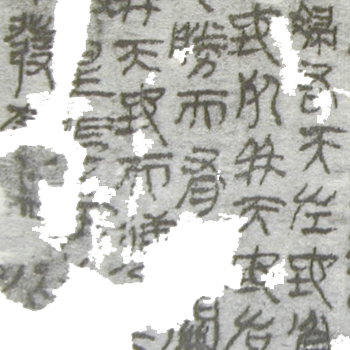 Galambos (2006)
Galambos (2006) -
"Shuowen Jiezi"
Chapter Two, "The Qin and Han creation of the standard"
In: Imre Galambos, Orthography of early Chinese writing: Evidence from newly excavated manuscripts, pp. 31-63.
Budapest: Eötvös Loránd University, Department of East Asian Studies, 2006.
East Asian Library code: SINOL. 59 C 11.
The book is available on the teachers' shelves in the Leiden East Asian Library.
A PDF of this book is also available online on Imre Galambos' page
....or use the direct link to this title.
From Wikipedia: The free encyclopedia
-
許 Xǔ (100)
許慎 Xǔ Shèn, 說文解字 Shuō wén jiě zì [Discussion of simple characters and analysis of complex characters]
Edition: 说文解字: 附检字 Shuō wén jiě zì: Fù jiǎn zì [Discussion of simple characters and analysis of complex characters: With a character index]. 北京 Peking: 中華書局 Zhōnghuá shūjú, 1963. East Asian Library number: SINOL. 5093
This book is available on the teachers' shelves in the Leiden East Asian Library.
Assignments
20. For the first two of these three titles, read the assigned texts:
Galambos' Chapter Two, "The Qin and Han creation of the standard" and
the Wikipedia article "Shuowen Jiezi".
21. Please note down any difficulties you may encounter in these two texts, and bring your notes to class.
22. The third title is a modern reprint of the 說文解字.
(a) Have a good look at this book, which is currently available from the teachers' shelves in the Leiden East Asian Library.
(b) Check that you understand how the work is organised.
(c) Try to find the characters 說, 文, 解 and 字 in this dictionary.
Write down the page numbers and the dictionary's definition of these characters.
23. Check if you can find an edition of the 說文解字 online.

Autumn break
and some extra time to plan ahead
Planning
Term paper
Your hand-in assignment 1 has been discussed on an individual basis. Next,
do plan ahead and continue with your work on the term paper on a regular basis;
feel free to discuss any problems you encounter; and
make sure to hand in at least two draft versions during term (as explained in assignment 17)
Block 2
-
your texts and assignments for the
first week are already available online (20 Oct 14)first two weeks are available online (21 Oct 14); and -
details on hand-in assignment 2 are also online by way of an an early heads-up (20 Oct 14).
As promised, to help you plan ahead:
As always:
your suggestions for texts and subjects to be discussed in class are most welcome.
Block 2
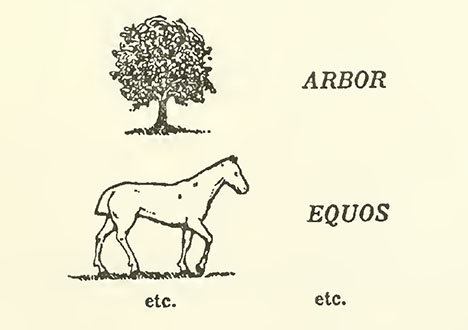 Texts
Texts
-
Chao (1959, 2002)
-
Saussure (1916, 1985)
趙元任 Yuen Ren Chao, 第一讲 ∙ 语言学跟跟语言学有关系的些问题 "Dì yì jiǎng: Yǔyánxué gēn gēn yǔyánxué yǒuguān de xiē wènti" [First lecture: Linguistics and some questions relating to linguistics]
In: 语言问题 "Yǔyán wènti" [Problems of language], 趙元任全集第1卷 Zhào Yuánrèn quánjí dì yí juàn [Collected works of Yuen Ren Chao, Part 1].
北京 Peking: 商务印书馆 Shāngwù Yìnshūguǎn, 2002, pp. 10-16.
Originally published in 1959. Earlier reprint, in traditional characters: 臺北 Taipei, 商務印書館 Shāngwù Yìnshūguǎn, 1968, pp. 1-10.
"Signe, signifié, signifiant" and "Premier principe: l'arbitraire du signe"
In: Ferdinand de Saussure, Cours de linguistique générale: Édition critique préparée par Tullio de Mauro [A course in general linguistics: Critical edition prepared by Tullio de Mauro], pp. 97-102.
Enlarged edition, Paris: Payot, 1985, reprint 1997. Postface by Louis-Jean Calvet.
First edition: 1972. De Saussure's original published by Charles Bally and Albert Séchehaye, in collaboration with Albert Riedlinger, Genève, 1916.
Online Scribd.com edition: Saussure, Ferdinand - Cours de Linguistique Generale, pp. 97-102.
Note: in the online edition, the text can be enlarged by pressing the "Full Screen" button....or in English translation:
-
Saussure (1959)
"Sign, signified, signifier " and "Principle I: the arbitrary nature of the sign".
In: Ferdinand de Saussure, Course in general linguistics.
New York: Philosophical Library, 1959, pp. 65-70. Translation of Saussure (1916), translated by Wade Baskin.
Doc88 online browsable edition: Course in general linguistics, pp. 65-70.
Archive.org PDF edition: Course in general linguistics, pp. 65-70.
Note: on page 65, the illustration has been printed too low: it should follow immediately after the first paragraph of the text.
Assignments
Reminder
As announced, your second hand-in assignment is due in Week 2 (of Block 2, on Fri 7 Nov).
That assignment will be a written version of assignment 26 of Week 1 (on Fri 31 Oct).
In order to help you plan ahead, you can prepare a draft version of this assignment for discussion in class in Week 1.
24. Read Chao's 第一講, noting down any difficulties you may have in reading the text. Please bring your notes to class.
25. Refresh your memory about the way different linguistic units can be represented in transcription.
Also compare your notes on assignment 16.
Please bring any remaining questions to class.
26. In this lecture, Yuen Ren Chao tells an anecdote about an old Chinese woman, and then adds the original German version of the story.
Summarize Chao's point in your own words. Make use of Saussure's original work to explain how Chao's point relates to the Saussurean notion of the signe.
- Your summary is intended for an academically interested audience which does not know any Chinese, and is not necessarily trained in linguistics.
- You need not quote each and every example from the story.
- Please provide transcriptions and/or English translations for expressions from other languages wherever appropriate.
- Small is beautiful: maximally four pages A4 at double line spacing.
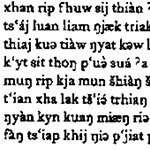 Texts
Texts
-
William H. Baxter "Introduction"
-
W. South Coblin, "A brief history of Mandarin"
In: Journal of the American Oriental Society, volume 120, no. 4, 2000, pp. 537-552.
= Chapter 1 of A handbook of Old Chinese phonology.
Berlin: Mouton de Gruyter, 1992, pp. 1-26.
Reading notes
- A general understanding of the comparative method is assumed in these two texts – and in this session of your course.
- Baxter (1992: 1) mentions the Sino-Tibetan family of languages. An overview of these languages can be found on Ethnologue.
Assignments
Hand-in Assignment #2
Hand in your assignment #26 above, printed on paper, at the beginning of class on 7 November, or in my pigeonhole beforehand.
Please note the format requirements.
27. Read the assigned texts and consult the additional information in the Reading notes.
28. Note down any questions or difficulties you may have in reading these texts, and bring your notes to class.
We will discuss these questions in class on a page-by-page basis.
Just as a reminder, please prepare your answers to the following assignments in writing.
You will not need to hand in these assignments, but you will be asked to read from your notes in class.
The following items refer to Baxter (1992)
29. On p. 1, mention is made of "the European bias of much modern linguistics".
Please demonstrate how this bias may affect the analysis of a concrete example – i.e. a word, phrase, clause or sentence in a language of your choice.
30. Also on p. 3, make sure you have a clear understanding of relevant language names and dates mentioned here. Also compare pp. 14-15 of this text.
(a) The dates, alternative English terms and corresponding Mandarin terms for Middle Chinese and Old Chinese were discussed in class; please consult your notes if necessary.
(b) How about Modern Chinese? How does this notion compare in terms of dates, status, and use? – In this connection, als compare what Baxter has to say on p. 8.
31. "Karlgren saw himself as reconstructing phonetics, not phonology" (p. 3).
(a) The difference between these two fields of study were also discussed in class. So again: please consult your notes if necessary.
Be prepared to formulate this distinction in your own words in one or two short sentences.
(b) To illustrate this difference, provide examples from two languages: Mandarin and your native language.
If you are native speaker of Mandarin, take English as the second language.
(c) Also provide an example, in a language of your choice, of the "symmetry and pattern which are typical in the phonological systems of natural languages" (pp. 3-4).
32. Spot and correct the typo at the bottom of p. 4; also compare p. 13.
33. "The phonological system of Middle Chinese is described in Chapter 2" (p. 5)
Describe in your own words why it makes methodological sense to devote a chapter on Middle Chinese in a book on Old Chinese.
34. Consider the overview of Chinese languages on pp. 9-11.
Can you name examples of differences in the rate of phonological change in the history of the languages mentioned here?
35. This work takes "a new approach to the use of evidence from the Chinese script" (p. 4). Some examples are given on pp. 11-13.
Similar attention to details from the Chinese script is presented by the author and his colleague Laurent Sagart from CNRS (Paris) in their forthcoming book Old Chinese: a new reconstruction.
The historical linguistic study of the Chinese writing system has been revolutionized in recent years.
One example is the overview of Imre Galambos' projects on Chinese manuscripts discussed in Block 1, Week 6.
(a) Please provide two examples of a graphical shape of a Chinese character which would be "anachronistic" (p. 5) to use in reconstructing phonology.
(b) Also provide two examples where the graphical shape of a Chinese character has been adapted to keep up with phonological change.
The following items refer to Coblin (2000)
Page numbers followed by a slash and the letter L or R (e.g. "p. 537/L") indicate the left or right column on the page.
36. In this article, you may find more new technical details than in the previous one.
Be sure to identify and look up linguistic terms as well as historical names and events you are unfamiliar with, and/or to brush up your knowledge on these items.
37. Provide your own English translations for each of the book titles mentioned on p. 537/R.
In the remainder of the article, keep checking that you understand the titles of all works discussed.
38. As mentioned in Four tones (Chinese), the 入 rù tone (p. 538/L) is labeled as "entering AKA checked" in English. Can you explain the etymology of the Chinese term, and the source of the English labels?
39. Please summarize the conclusion at the bottom of p. 538/R in your own words.
40. On p. 540/L, the Arte de la lengua mandarina and Vocabulario de la lengua mandarina by Francisco Varo are mentioned.
Check if modern editions of both these works are available – and if so, who are the editor(s).
41. On p. 542/R, it is explained that "the zhèngyīn system of ca. 1450 was based not on the pronunciation of a single dialect or area but was instead a composite entity".
(a) What could be the reason that a purported linguistic standard is in fact composite in nature?
(b) Cite both advantages and drawbacks of a standard of this nature for its speakers;
and for linguists of later generations.
(c) Can you cite other (historical and/or modern) examples of composite linguistic standards in China?
42. As noted on p. 543/L, Jiǎng Shàoyú 蔣紹愚 has pointed out that for historical stages of Chinese, "spoken material has [...] been accessible only indirectly through the medium of the literary sources".
(a) Please paraphrase this statement in your own words, and/or give an example.
(b) Compare this state of affairs with the status of spoken materials in the description of the modern standard language as it arose in the twentieth century.
43. Please give a (short!) summary of the etymology of the modern perfective particle le as described on p. 548.
44. In the short abstract of this article (p. 537), it is explained that the text exposes a "flawed" view about the provenance of standard Mandarin.
In linguistics as in any other branch of scientific research, flawed views are problematic only inasfar they cannot be falsified; otherwise, their very falsification helps science progress.
(a) Is there a difference in meaning between the terms Modern Chinese in assignment 30b and standard Mandarin as used here ("in its oldest sense", p. 537/L)?
If so: please indicate the difference(s).
And if not: check if these terms differ in other way (e.g. style, user base, varieties of English)?
(b) Give examples of flawed views in the field of language reconstruction (not necessarily Chinese) which have since been falsified.
(c) Give examples of views in linguistics which cannot be falsified.
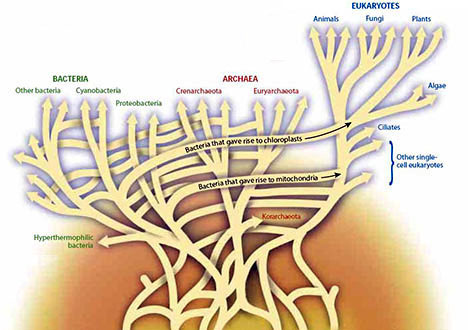 Texts
Texts
-
Rint Sybesma, "Cantonese sin 先 and the question of microvariation and macrovariation"
In: Cao Guangshun, Hilary Chappell, Redouane Djamouri, Thekla Wiebusch (eds.), Breaking down the barriers: Interdisciplinary studies in Chinese linguistics and beyond.
Taipei: Academia Sinica, 2013, pp. 971-994.
-
Excerpts from Jerry Norman, Chinese:
"Classification of Chinese dialects"
In: Norman (1988), pp. 181-183.
"The dialects of the Southeast"
In: Norman (1988), Chapter 9 = pp. 210-244.
Reading notes
-
An overview of Cantonese speech sounds may be found in "Phonology: The Cantonese sound system" = Chapter 1 of Stephen Matthews & Virginia Yip, Cantonese, A comprehensive grammar. London: Routledge, 1994, pp. 1-30.
- The Jyutping transcription used in Sybesma (2013) was developed by the Linguistic Society of Hong Kong.
- On p. 971, Sybesma (2013) mentions a NewScientist cover story by Graham Lawton entitled "Darwin was wrong".
For a comparison of Cantonese transcription systems, see e.g. WikiBooks: Cantonese/Romanization Systems.
For a biochemist's view (and a suggestion for a different headline), see Larry Moran's blog note: "Darwin Was Wrong?".
- On p. 972, reference is made to Norman (1988).
In that context, especially consult the section on "Classification of Chinese dialects" referenced above.
Assignments
45. Read the assigned texts.
Note down any questions or difficulties you may have in reading these texts, and bring your notes to class.
We will discuss these questions in class on a page-by-page basis.
46. Your comments on the abundance of weekly assignments are appreciated.
In the remainder of this course, the number of assignments per week will therefore be reduced in proportion to the assigned texts.
This week is a try-out: all questions below refer to Sybesma (2013) exclusively.
Please let me know if this works better for you.
Also note that this is meant to work in two directions: in the coming sessions, I will expect increased class input on those texts for which no assignments are set.
This week, this refers to the sections from Norman (1988).
47. Sybesma (2013: 976) discusses the difference "between a high level and a high falling tone, the latter of which is no longer recognized as a separate tone phonologically".
(a) Determine exactly how this difference can be gleaned from the way the four expressions discussed here, sin1, sìn1, sìn2 and sìn3, are transcribed in comparison to the transcription of Cantonese tones applied in this article.
Hint: consult the Reading notes
(b) Check your notes from our previous sessions to make sure you can define tone, intonation, tempo, volume and prosody as technical terms.
(c) If, as suggested here, it is possible to analyze the high level pitch and the high falling pitch as allotones in Cantonese, will this allow or disallow the possibility of analyzing sin1, sìn1, sìn2 and sìn3 in terms of intonation and/or other prosodic means?
(d) In the remainder of the article, point out all instances where prosodic means other than intonation are mentioned in the description of sin1, sìn1, sìn2 and sìn3.
48. On p. 975, it is mentioned that
"some informants seem to have a preference for the sentence with preverbal sin1, a preference which diminishes if postverbal sin1 is followed by other material, like an SFP".
Without consulting the remainder of the article, can you think of a possible rationale behind this mechanism?
And/or do you know a similar phenomenon, in a language of your choice?
49. The description and analysis of "postverbal sìn2" starts on p. 979.
Formulate your definition for this use of the term postverbal in light of
- examples (11) a through e (pp. 979-980)
- "the nature of the predicate" (pp. 981, 984)
- "verbal particles" (p. 986)
50. In examples 14 through 16 (pp. 981-982), are different types of ungrammaticality distinguished?
If so, how are these different?
Or if not, what is the common denominator?
51. On p. 985, the footnote mentions the rare case of a Mandarin degree modifier following the adjective it modifies.
Do you know of any other Mandarin degree modifiers in this position?
52. Section 3.2 (p. 988) discusses evidence from Yuè's linguistic neighbor, Zhuang.
(a) Find proposed genetic affiliations and the current number of speakers, e.g in SIL International's Ethnologue.
(b) Does Zhuang have phonemic tone?
53. On p. 991, we read that Zhuang gonq and Cantonese sin1 "are not phonologically related [emphasis added]".
Is this statement different from claiming that these two expressions are not genetically related?
If so, how?
Or if not, which term (not necessarily either of the two!) would you prefer for the (non-)relationship between gonq and sin1?
Hints: compare p. 972, and consult your notes from previous sessions on genetic relationships, borrowing and mixed languages.
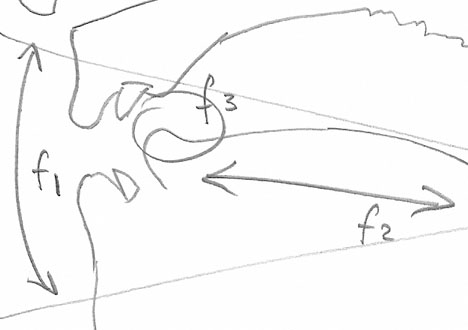 Texts
Texts
-
"The modern standard language I"
In: Norman (1988), Chapter 6 = pp. 133-151.
-
IPA Charts
-
All offical charts are on the IPA website
-
InternationalPhoneticAlphabet.org has an IPA Chart with sounds
-
"Formants"
See <formants.png>
Session set-up
Today's session will consist of three parts:
- Phonetics Recap:
With "everything-you-wanted-to-know-about-phonetics-but-where-afraid-to-ask" opportunities
- Chinese-Language-Names Recap:
Including Taiwan Mandarin vs. Taiwanese, Northern vs. Southern Guānhuà, and so on...
- Text:
Our usual discussion of the assigned readings
Assignments
Final Hand-in Assignment (#3)
54. Hand in an updated version of your term paper at the beginning of class on 21 November, or in my pigeonhole beforehand.
Please note the format requirements.
55. Phonetics Recap:
Part One: Consonants
Part Two: Vowels
Please consult:
- the IPA charts
- the info sheet on vowel formants
56. Chinese-Language-Names Recap:
First, check that you understand what is meant by each of the language names in the list below.
Some nomenclature is explained in section 6.2 in the assigned chapter from Norman (1988).
Now arrange these terms in meaningful patterns: geographically, chronologically or otherwise.
- Ancient Chinese
- Archaic Chinese
- Báihuà
- Běifāng Fāngyán
- Cantonese
- Early Mandarin
- Early Middle Chinese
- Formosan languages
- Gàn
- Guānhuà
- Guóyǔ
- Hakka
- Hànyǔ
- Hokkien
- Huáyǔ
- Kèjiā
- Late Middle Chinese
- Mandarin
- Middle Chinese
- Mǐn
- Modern Chinese
- Northern Guānhuà
- Old Chinese
- Pǔtōnghuà
- Southern Guānhuà
- Taiwan Mandarin
- Taiwanese
- Wú
- Xiàndài Hànyǔ
- Xiāng
- Yuè
- Zhōngguóhuà
- Zhōngwén
57. Text:
Read the chapter from Norman (1988).
Note down any questions or difficulties you may have and bring your notes to class.
We will discuss your questions, and mine, on a page-by-page basis.
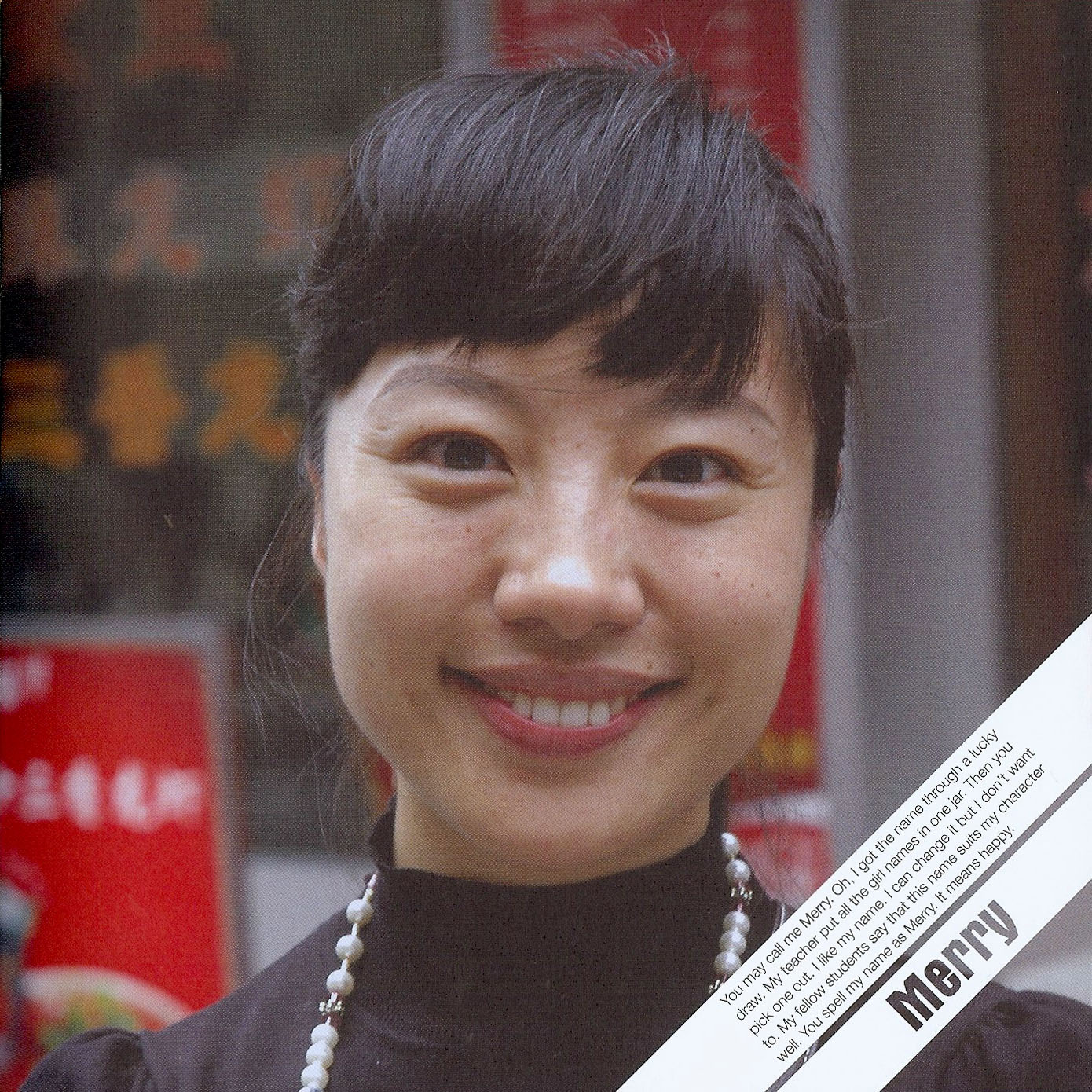 |
Source: In China, my name is... (2009) |
Text
-
"The modern standard language II"
In: Norman (1988), Chapter 7 = pp. 210-244.
Session set-up
Today's session will consist of two parts:
- Oral presentations:
On the subject of your term paper
- Text:
Our usual discussion of the assigned readings
Assignments
Oral Presentation
58. On 28 November, as announced, a short oral presentation will be expected of you about the subject of your term paper.
Points of consideration:
- Your presentation will be in English
- Maximum duration is eight minutes – please time yourself in preparation!
- Your target audience intelligent and interested, but not necessarily trained in linguistics or in Chinese. Fellow students from other departments may be invited to listen in.
- A short handout for the audience will come in handy, because it will save you time writing on the blackboard (please prepare 5 copies)
- Powerpoints are allowed, but only after prior consulation (over email) – also note that setting up your system will cut into your eight minutes!
59. Read the chapter from Norman (1988).
Note down any questions or difficulties you may have and bring your notes to class.
We will discuss your questions, and mine, on a page-by-page basis.
Excursion
60. On this last day of class, we will have a sightseeing tour of various linguistic hotspots at the Leiden Faculty of Humanities.
We will meet at 9:15pm in class.
